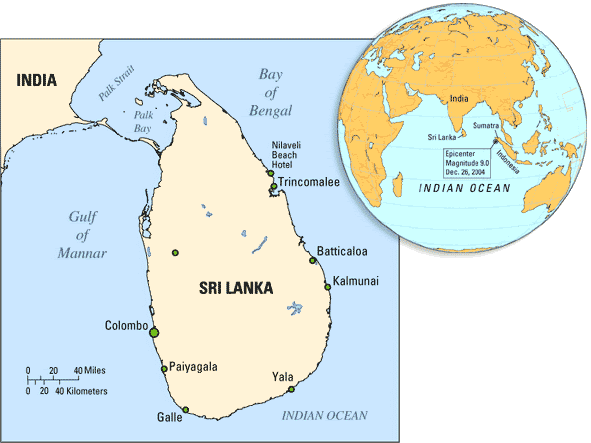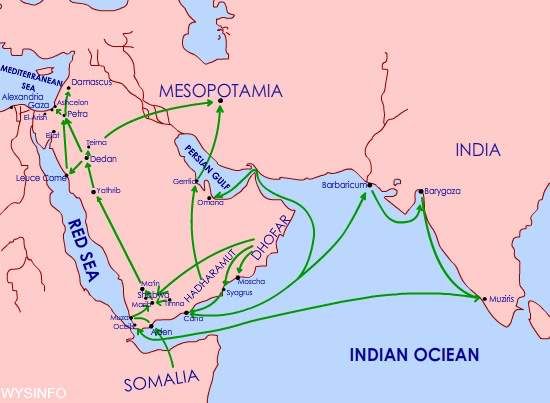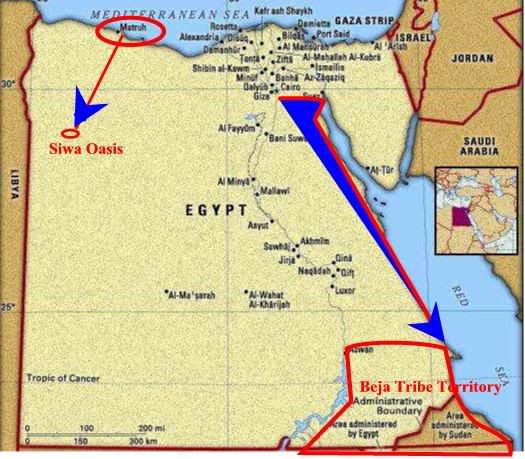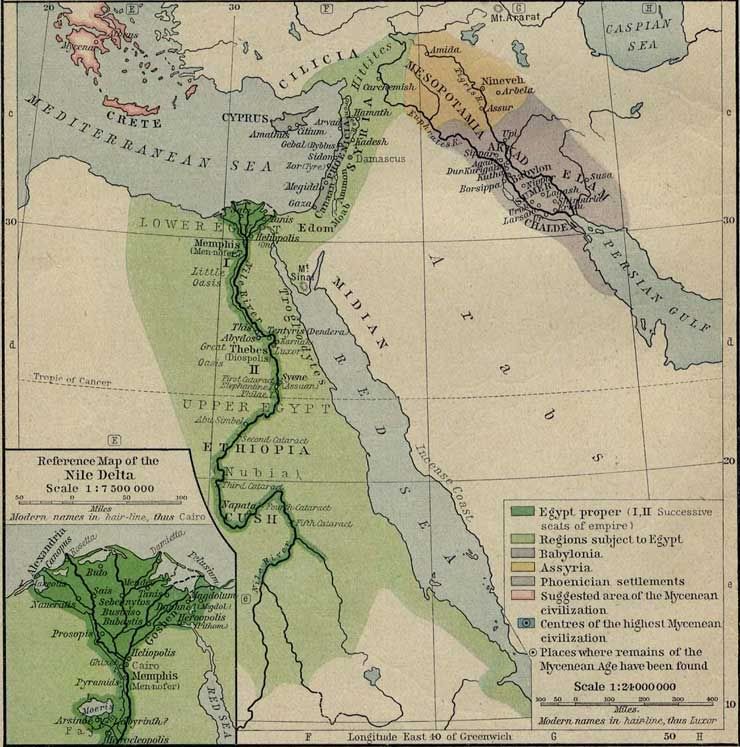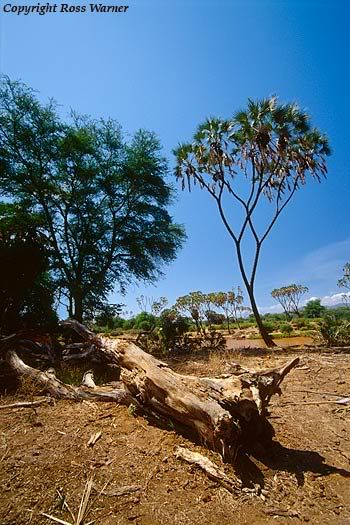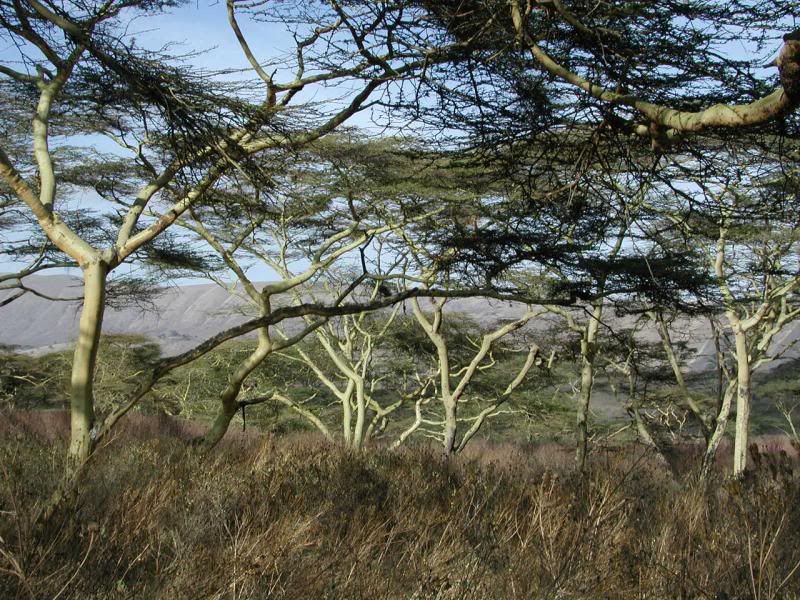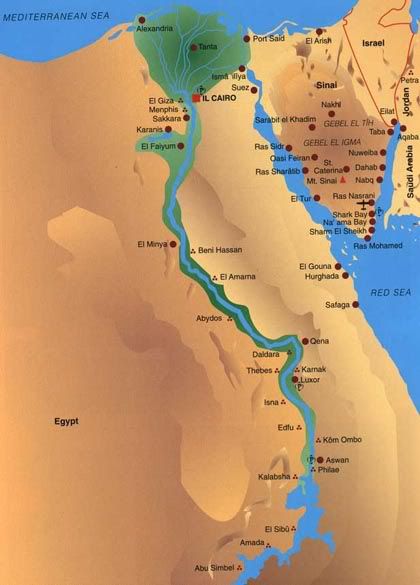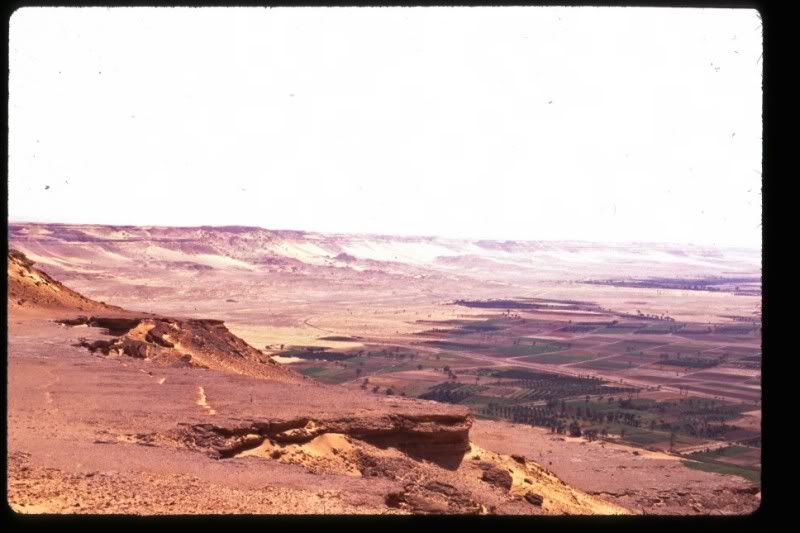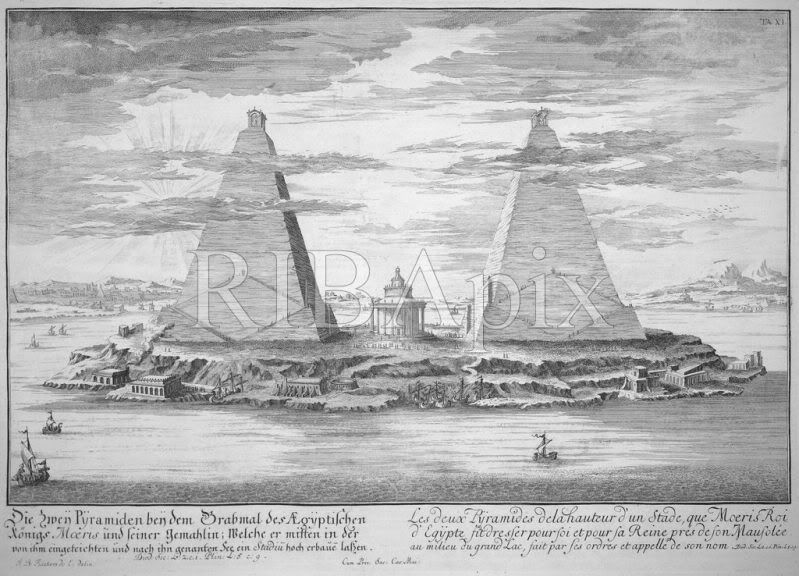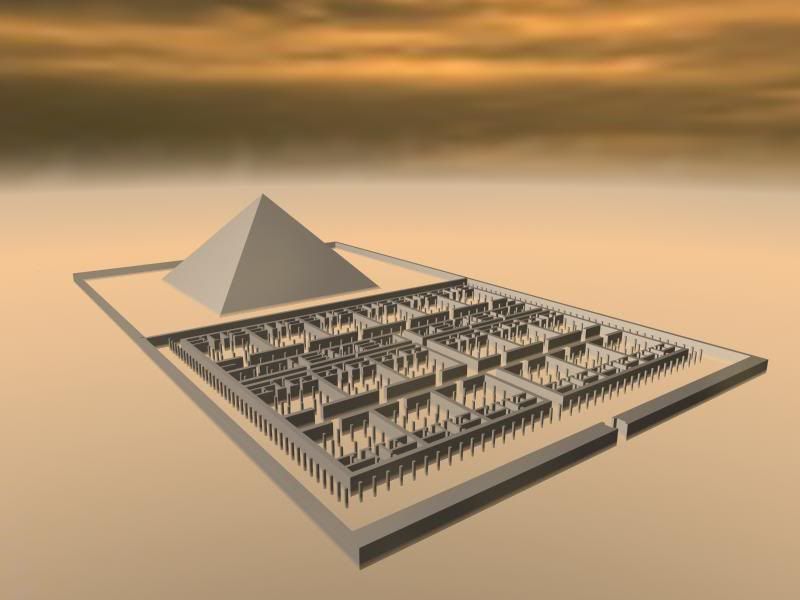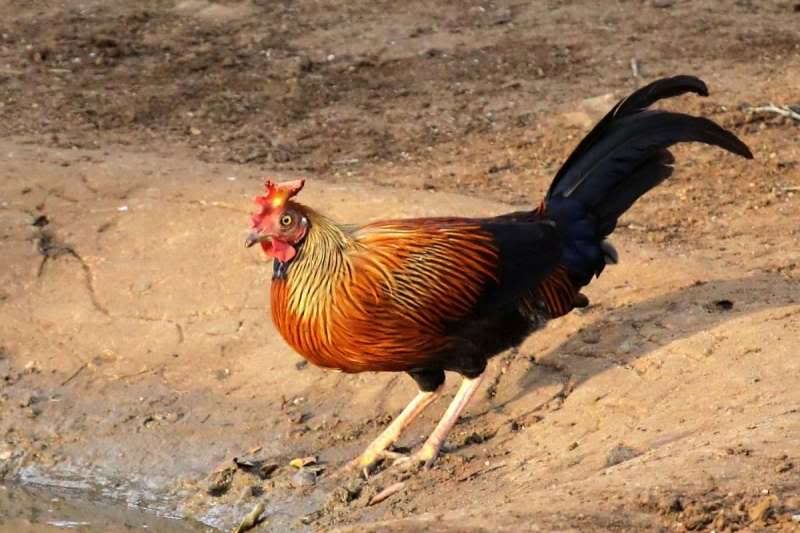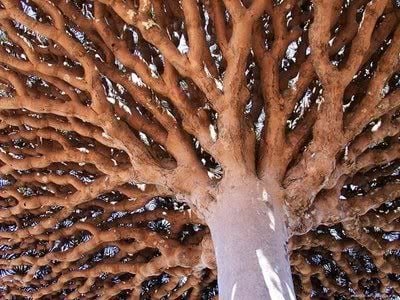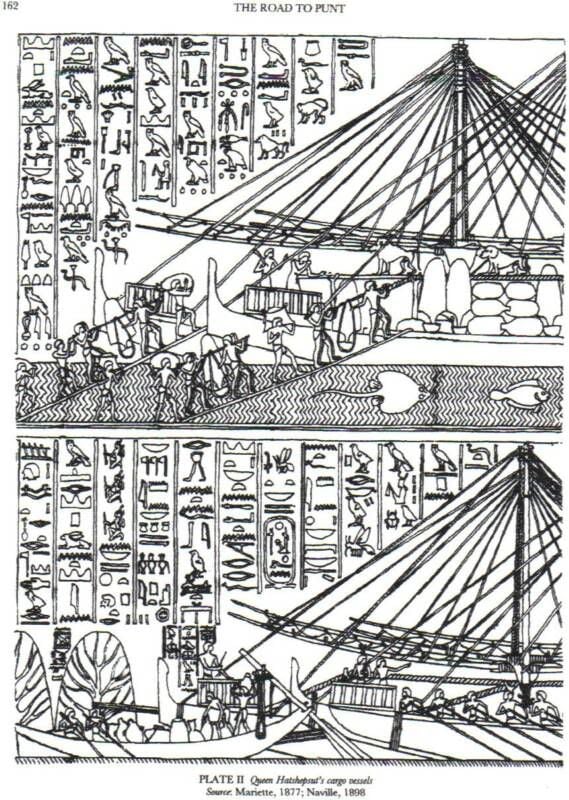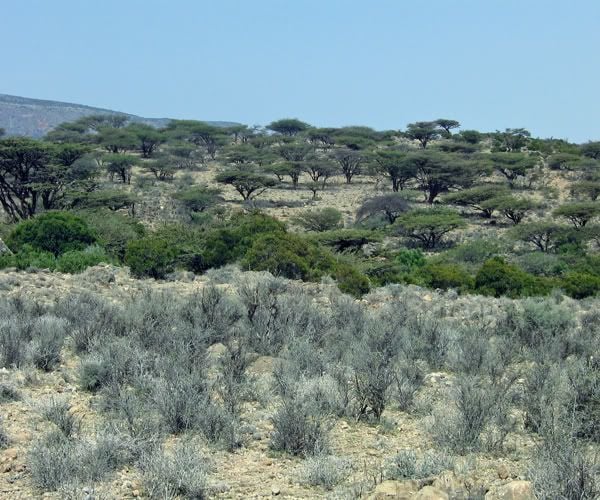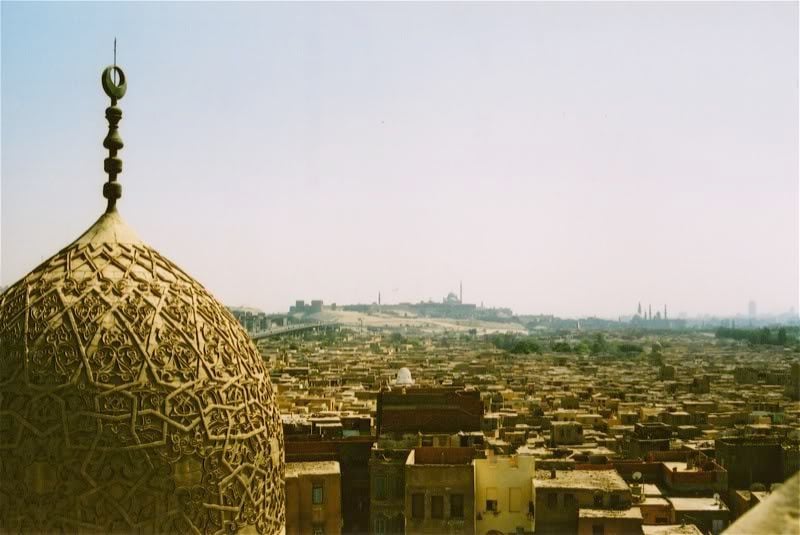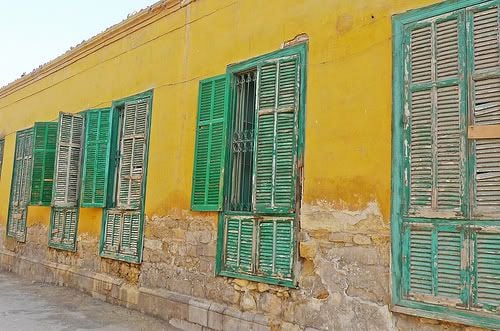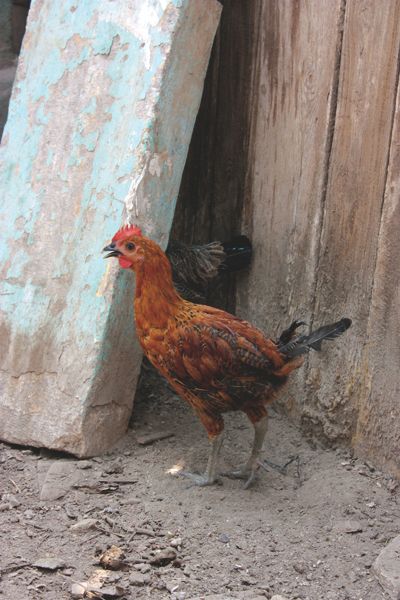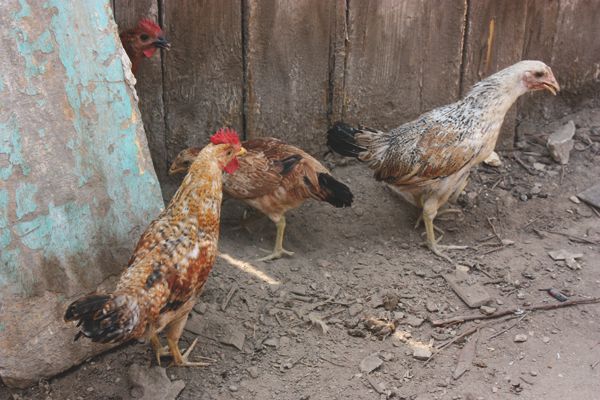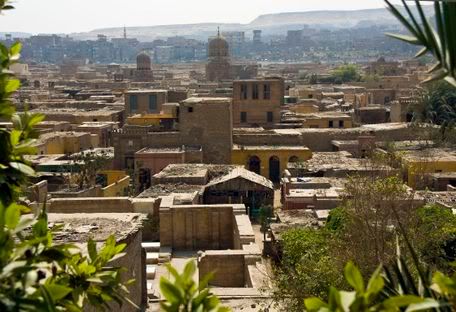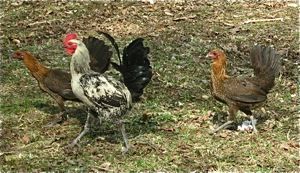Long before dynastic days in Egypt, before the first civilization had sprung up along the Northern Nile Valley, ancient peoples moved along a migration route linking the Indian Sub-Continent with the Horn of Africa.
The first inhabitants of the Nile River Valley lived in what is now termed Upper (Southern) Egypt, and Lower (Northern Eastern) Sudan. Archaeological texts describe these people as the Tasian Culture and Badarian A Group Culture respectively.
These cultures founded the civilizations of Upper Egypt, Eastern Sudan, Eritrea (Abyssinia) all the way down to the Horn Africa.
During Egyptian Dynastic days, the composite culture that emerged from the fusion of Tasians and Badarians, (which was often at odds with its sibling cultures in Ethiopia, Sudan and Egypt,) and their vast territories would come to be known as the Ta-Seti (Ta Sa'id) people that inhabited the Land of the Bow.
Much later, during Greek and Roman times, the Ta-Sa'id would come to be known as the Troglodytae or 'Cave Dwellers'. This is akin to the term Berber, which comes from the Greek term for Barbarian. The Greeks were a bit much...
At any rate, these Troglodytae lived then as their descendants do to this day, along the African coast of the Red Sea all the way down to Puntland along the northern shores of the Horn of Africa, in present day Puntland.
The original inhabitants of Yemen in Southern Arabia are also descended from this East African stock- though it should be remembered that Yemen represents the literal bridge between the Indian Subcontinent and Northeastern Africa. Consequently, the Yemeni "Arab" is equal parts Brahman and equal parts East African. As a digression we could well go into a long discussion of their cattle culture but its late. Today, the modern tribes descended of Tasian and Badarian Cultures AKA Ta-Sa'id and Troglodytae are known as the Beja Peoples or
Bejawi/Bigawi.
The Afro-Asiatic language still spoken by the Bejawi/Bigawi peoples is called To-Bedawie. This language is essentially similar to Ancient Egyptian languages. The Ta-Sa'id culture would eventually give rise to the Sa'id culture of Upper Egypt. From the Sa'id we have uniquely Egyptian dialects of two languages, Sahidic Coptic and Sahidic Arabic.
The "Troglodytae" of Egypt's Red Sea Hills (The Bigawi Bisharis) were identified by early religious scholars as the descendants of a woman name Keturah. Keturah in the Hebrew language means Incense. Myrrh and Frankincense (olibanum) were referred to as qetera in Arabia Felix (modern day Yemen). Keturah (not to be confused with Hagar) was one of the women that mothered children with the Old Testament patriarch Abraham. In Ancient Egyptian (language) Abrahm (Abraham) literally means "of Brahman" or more generally transcribed as ' Holy Seers from the Brahmanputra River'. This of course refers to the diaspora of Indus Valley peoples into Ur and westwards many thousands of years ago.
The Troglodytae (Greek: Τρωγλοδῦται) or Troglodyti (literally "cave goers"), were a people mentioned in various locations by many ancient Greek and Roman geographers and historians including Agatharcides, Strabo, Diodorus Siculus, Pliny, Tacitus, Josephus, etc. The earlier references call them Trogodytes, which was evidently altered later by folk-etymology from Greek trōglē, cave. They were usually placed in the desert along the African side of the Red Sea coast, from Berenice Troglodytica southward as far as Somalia. They have been connected with the modern Afar of Eritrea and neighboring peoples, as well as with the Tuareg.
Troglodytis in Flavius Josephus
Flavius Josephus alludes to a place he calls Troglodytis while discussing the account in Genesis, that after the death of Sarah, Abraham married Keturah (not to be confused with Hagar) and fathered six sons who in turn fathered many more. "Now, for all these sons and grandsons, Abraham contrived to settle them in colonies; and they took possession of Troglodytis, and the country of Arabia Felix..."
The Troglodytis Josephus refers to here is generally taken to mean both coasts of the Red Sea. However, Josephus goes on to state that the descendants of one of these grandsons, Epher, invaded Libya, and that the name of Africa was thus derived from that of Epher.
According to the Hebrew Bible, Keturah or Ketura (Hebrew: קְטוּרָה, Modern Qətura Tiberian Qəṭûrāh ; "Incense") was the woman whom Abraham, the patriarch of the Israelites, married after the death of his wife, Sarah. Her nationality is unknown. Keturah bore Abraham six sons, Zimran, Jokshan, Medan, Midian, Ishbak, and Shuah.
What has this to do with chickens? These Tasian A Group Cultures of East Africa, hence forth to be described as Bejawi/Bigawi peoples, had been moving back and forth across the Arabian Peninsula (modern day Yemen and Oman) to what is now Pakistan and Western India since the very dawn of history. Bigawi peoples were trading extensively with Indus Valley Civilization- no later than ~3300 to 1300 BCE, and in turn, they traded their imported wares to the Northern Egyptians of the Delta (Lower Egypt) and on to the Mediterranean.
The progenitors of the Egyptian Fayoumi were transported by the Bigawi/Bejawi people to Egypt sometime around 1550 B.C.E.
Peoples native to the Indian Subcontinent including Sri Lanka held a great deal in common with their East African and Southern Arabian cousins.
Please be reminded that this moment time took place literally thousands of years before the advent of Judaism and subsequently even more distant in time from the birth of Christianity.
*It is easy for people to confuse the word Arabia with Islam because most Arabic speakers today are Muslims. Nevertheless, all you historians will recall that the emergence of Islamic religion is even more recent ~ 650 years after the birth of Christ.
Arabian cultures were flourishing thousands of years ago and as mentioned above, Arabia Felix AKA Yemen was the physical crossroads between India, the Red Sea and the Horn of Africa.
Millet, Sesame, Coffee, Myrrh and Frankincense was carried eastward to India. Cumin, Turmeric, Cinnamon, Black Pepper, Cloves and Citrus was carried westwards.














